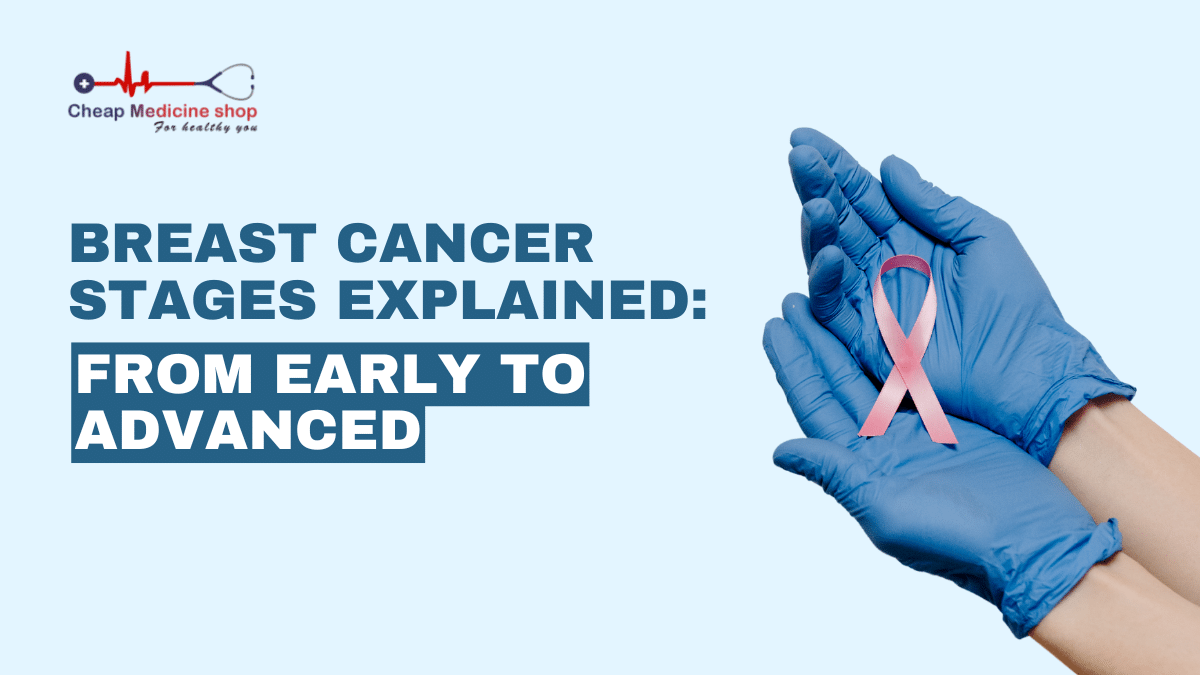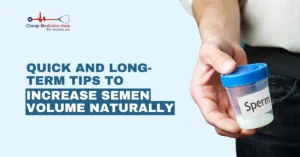Hearing the words ‘Breast Cancer’ can bring many questions. You might wonder what it means for you or someone you care about. One of the first things doctors determine is the stage of the Cancer.
Knowing the Breast Cancer stages is very important. Breast Cancer staging tells you how far the Cancer has spread. It guides treatment choices and helps set realistic hopes.
It helps your healthcare team understand how much Cancer is in the body. This knowledge guides them in planning the most appropriate care for you.
Trying to understand the different stages of Breast Cancer can feel overwhelming. This article aims to simplify it. It will walk through each stage, from the earliest to the most advanced.
Learning about each stage, survival expectations, and typical treatment paths can help you feel more informed and have better conversations with your doctors.
What does Breast Cancer staging mean?
Breast Cancer stages show how much the Cancer has grown or spread in the body. Staging is like creating a map of the Cancer. Doctors use tests to find out key details, such as the size of the tumor in the breast. They use these stages to determine the best treatment and understand the outlook.
They check if Cancer cells have spread to nearby lymph nodes, small glands that help fight infection. Doctors also see if the Cancer has traveled to other body parts.
They use the TNM (Tumor, Node, Metastasis) system or staging to describe Breast Cancer spread. T refers to tumor size, N to lymph node involvement, and M to distant spread or metastasis, which means the Cancer has spread to distant organs. Combining the T, N, and M information gives the overall stage.
The stages run from 0 (non-invasive) through IV (metastatic). Early stages mean the Cancer is small and limited. In contrast, later stages mean it has grown or spread to other body parts and often requires more intensive treatment.
Save up to 90% on your medicine bills

Abraxane 100 Mg Injection

Alphalan 5 Mg Tablets

Adriamycin 50 Mg Injection

Abirapro 250 Mg Tablet
Stage 0 Breast Cancer
The earliest form of Breast Cancer is stage 0, also called Carcinoma In Situ (CIS). This means the Cancer cells are only in the milk ducts or lobules. They have not spread to nearby tissue.
It is non-invasive and has an excellent outlook. Because it is an early stage, treatment is often very effective. People with stage 0 Breast Cancer usually have a good chance of recovery with proper care.
Stage 1 Breast Cancer
Stage 1 Breast Cancer signifies the tumor is small. It is usually less than 2 centimeters and has not spread to the lymph nodes.
This stage is divided into subtypes, like stage 1A Breast Cancer, which refers to very small tumors with no lymph node involvement. Early Breast Cancer treatment helps prevent Cancer from growing.
Stage 2 Breast Cancer
Stage 2 Breast Cancer indicates the tumor is larger than in stage 1. It also has possibly spread to a few nearby lymph nodes. This stage can be further divided, such as stage 2B Breast Cancer, where the tumor is larger or more lymph nodes are involved.
Stage 2 Breast Cancer has a strong survival rate, especially when treated early and effectively.
Stage 3 Breast Cancer
Stage 3 Breast Cancer is more advanced. The tumor may be large, or the Cancer has spread to many lymph nodes. This stage is sometimes called locally advanced Breast Cancer.
Stage 3 Breast Cancer survival rate varies by age and other factors. For example, younger individuals may respond differently to treatment than older adults.
Stage 4 Breast Cancer
Breast Cancer Stage IV is also known as Metastatic Breast Cancer. This stage means it has spread beyond the breast and nearby lymph nodes. This spread can occur to other body parts, such as bones, liver, lungs, or brain.
This stage is more challenging to treat. The stage 4 Breast Cancer survival rate depends on many factors, including age, overall health, and how well the Cancer responds to treatment.
Stage 4 Triple Negative Breast Cancer subtype lacks Estrogen, Progesterone, and HER2 receptors. It has a lower 5-year survival compared to other subtypes.
Treatment options for different Breast Cancer stages
Treatment depends on the stage and type of Breast Cancer. After diagnosis, you typically start surgery within weeks. Radiation follows surgery and chemotherapy, if needed, and begins before or after surgery based on tumor features. Hormone therapies may last 5 to 10 years if the receptors are positive.
You may worry about side effects, long-term outcomes, and quality of life. In the early stages, surgery and radiation can be curative. In later stages, new targeted medications and immunotherapies hope to slow the disease and ease symptoms.
Support groups and palliative care teams help manage pain and emotional stress. Additionally, you can ask your care team about clinical trials; they can offer access to cutting-edge treatments.
Your doctor will help you choose the best plan for your situation.
- Early-stage Breast Cancer (Stage 0, 1, and 2): The first step of treatment often starts with surgery to remove the tumor. This may be followed by radiation to kill any remaining Cancer cells. Hormone therapy or chemotherapy may be used to lower the risk of Cancer returning. For example, the stage 1A Breast Cancer treatment timeline usually includes surgery followed by radiation and possibly hormone therapy.
- Stage 3 Breast Cancer: Treatment is more intense and may include chemotherapy before surgery to shrink the tumor. After surgery, the doctor may recommend radiation, hormone, or targeted therapy. The aim is to control the Cancer and prevent it from spreading further.
- Stage 4 Breast Cancer: Treatment focuses on controlling the Cancer and improving quality of life. This may include chemotherapy, hormone therapy, targeted drugs, or other treatments. Because the Cancer has spread, treatment aims to slow growth and manage symptoms.
Recent studies show progress in treating Breast Cancer at all stages.
Survival rates and prognosis
Survival rates help determine how many people live for a specific time after diagnosis. They are based on large groups and cannot predict individual outcomes.
5-year Breast Cancer survival rates are over 99% in localized (early) cases but around 32% once it’s spread. Localized (Stage 0 to I) 5-year relative survival is over 99%.
The stage 2 Breast Cancer survival rate is generally high, especially when treatment starts early. Stage 2 Breast Cancer survival rate (regional) is about 87% at 5 years.
Stage 3 5-year survival is about 72% to 75 %. The stage 3 Breast Cancer survival rate varies by age. Younger people may respond better to treatment, but many factors influence outcomes. Disparities exist across racial groups.
The stage 4 Breast Cancer survival rate (distant) is about 32% at 5 years. The stage 4 Breast Cancer survival rate by age shows differences based on how well the Cancer responds. Still, overall, it remains near 30%. Survival rates have improved with new treatments but remain lower than those of earlier stages.
Stage 4 Triple Negative Breast Cancer can be more aggressive and more challenging to treat. The stage 4 Metastatic Breast Cancer survival rate reflects the difficulty in managing Cancer that has spread widely.
Though the stage 4 Breast Cancer mortality rate remains higher than earlier stages, ongoing research and new treatments are helping improve outcomes. The stage 4 Breast Cancer prognosis depends on many factors, including how the Cancer responds to therapy and the person’s overall health.
New targeted therapies and immunotherapies are helping people with stage 3 and 4 Breast Cancer live longer and with a better quality of life. However, research is ongoing, and not all treatments work the same for everyone.
Conclusion
Breast Cancer stages describe how far the Cancer has grown or spread. Early-stage Breast Cancer (stages 0, 1, and 2) often has a good outlook with timely treatment.
Stage 3 Breast Cancer is more advanced but can be managed with strong treatment plans. Stage 4 means the Cancer has spread, and treatment focuses on control and quality of life. Survival rates vary by stage and age, but ongoing research continues to improve care.
If you or someone you care for is facing Breast Cancer, understanding the stages can help you make informed decisions. Early detection and treatment improve outcomes. Regular screenings and paying attention to physical changes are essential.
This article provides general information and should not be used as professional medical advice. Always consult an oncologist for Cancer diagnosis and treatment advice.
Frequently Asked Questions
Can you die from stage 0 Breast Cancer?
No, you usually cannot die from stage 0 Breast Cancer. This stage means the abnormal cells have not spread beyond the breast ducts. People with stage 0 Breast Cancer have a very high survival rate of about 99% over 5 years. Early treatment helps prevent it from becoming more serious.
What stage is multifocal Breast Cancer?
Multifocal Breast Cancer indicates two or more tumors in one breast. Staging varies based on the largest tumor size, lymph node involvement, and spread to other areas. Stages vary from 0 to 4, with higher stages reflecting more advancement and potentially larger tumors.
Can stage 1 Breast Cancer spread to bones?
No, stage 1 Breast Cancer does not spread to the bones. If Cancer cells are found in the bones, it means the Cancer has spread beyond the breast and lymph nodes, which is then stage 4 Breast Cancer. Stage 1 is limited to the breast and nearby lymph nodes.
Is stage 4 Breast Cancer curable?
No, stage 4 Breast Cancer is not curable because it has spread to other parts of the body. However, treatments like hormone therapy, chemotherapy, targeted drugs, and immunotherapy can help control Cancer, relieve symptoms, and help individuals live longer.
Cheap Medicine Shop only refers to credible, authoritative sources for our content. If you’re curious about how we ensure the integrity of our content, we encourage you to read our Content Information Policy.














